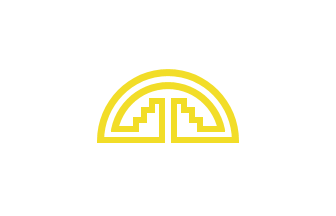 zachary harden
zachary harden
Keywords: comunidad andina de naciones | stairs | arch | andean community of nations |
Links: FOTW homepage | search | disclaimer and copyright | write us | mirrors

Last modified: 2023-06-03 by  zachary harden
zachary harden
Keywords: comunidad andina de naciones | stairs | arch | andean community of nations |
Links: FOTW homepage |
search |
disclaimer and copyright |
write us |
mirrors

image by Eugene Ipavec, 03 Aug 2005
Esteban Rivera, 2 July 2005
Note:
On September 20, the Ministers of Foreign Affairs and Foreign Trade of the
current members of the CAN have issued a statement in New York recognizing the
incorporation of Chile as full member, by Decisión 645 (
http://www.comunidadandina.org/prensa/notas/np20-9-06.htm ). Chile was an
original member but it withdrew in 1976, rejoining in 2006. Venezuela was also
an original country but it withdrew in 2006.
Esteban Rivera, 23 September 2006
The flag of the Andean Community (Communidad Andina or CAN) is
their logo, which looks like a pattern from indigenous
Andean textiles, in gold on a white backround.
Richard Knipel, 13 Jul 2004
The flag of the Andean Community that appears in
photos
from their offical site has the logo roughly 1/3 hoist height.
Eugene Ipavec, 03 Aug 2005
I believe the adoption of their flag, as opposed to their logo,
may be brand new, considering that I browsed through many older photos
of meetings without it (but that did have the national flags), and
that the one that did have it is dated July 12, 2004 (yesterday) for
the inaugural session of the 15th Andean Presidential Council.
Richard Knipel, 13 Jul 2004
Article 82.- Those signs may not be registered as marks that:
(j) reproduce or imitate the name, coat of arms, flag or other emblem, initials or designation or abbreviated designation of any State or any international organization that has been officially recognized, without the permission of the competent authority of the State or of the international organization concerned; in any event, such signs shall be registerable only where they constitute a subsidiary element in relation to the main distinctive sign;
quoted by Richard Knipel, 13 July 2004
In 1999 these two organizations began negotiating a merger with a view to
creating a South American Free Trade Area (SAFTA). On December 8, 2004, during
the III Summit of Presidents of South America, held in Cusco, Peru, the
Presidents of Argentina, Bolivia, Brazil, Chile, Colombia, Ecuador, Guyana,
Paraguay, Suriname, Uruguay and Venezuela signed a cooperation agreement, the Cuzco Declaration (http://www.comunidadandina.org/documentos/dec_int/cusco_sudamerica.htm)
and they published a joint letter of intention for future negotiations towards
integrating all of South America in the context of the CSN, Comunidad
Sudamericana de Naciones (South American Community of Nations), patterned after
the European Union.
During 2005, Venezuela decided to join Mercosur. Venezuela's official position
first appeared to be that, by joining Mercosur, further steps could be taken
towards integrating both trade blocs. CAN Secretary General Allan Wagner stated
that the Venezuelan Foreign Minister Alí Rodríguez had declared that Venezuela
did not intend to leave the CAN, and its simultaneous membership to both blocs
marked the beginning of their integration.
However some analysts interpreted that Venezuela might eventually leave the CAN
in the process. This prediction seems to have been finally verified in April
2006, with Venezuelan President Chávez's announcement of his country's
withdrawal from the Andean Community after stating that, as Colombia and Peru
have signed free trade agreements (FTAs) with the United States, the Community
is "dead". Officials in Colombia and Peru have expressed their disagreement with
this view, as did representatives from Venezuela's industrial sector (Conindustria).
Despite this announcement, Venezuela has yet to formally complete all the
necessary withdrawal procedures. According to Venezuela's Commerce Minister
María Cristina Iglesias, the entire process will take up to five years. Until
then, Venezuela and its partners remain bound by the effects of the community's
preexisting commercial agreements.
In this context, the CSN "will be a continent-wide free trade area that will
unite two existing free-trade organizations—Mercosur and the Andean Community—
liminating tariffs for non-sensitive products by 2014 and sensitive products by
2019. The headquarters of this new organization will be in Lima while the South
American Bank will be in Brasilia according to the agreements during the
meetings. Complete integration between the Andean Community and Mercosur into
the South American Community of Nations is expected by 2007.
On December 28, 2005, Chilean chancellor Ignacio Walker proposed that the name
of the community be changed to South American Union (Spanish: Unión Sudamericana,
Portuguese: Uniăo Sul-Americana); nevertheless, many members stated to him that
that proposal had already been rejected to prevent confusion related to its
acronym (U.S.A.)".
Source: WikiPedia (http://en.wikipedia.org/wiki/South_American_Community_of_Nations)
The CSN does not yet have an official website, nor an official flag, but I saw a
logo on a banner being displayed, with a
white background, displaying the South American subcontinent on gray, plus
several lines looking like rays, in blue, red, yellow and green.
Source: Colombian Ministry of National Defense (http://www.mindefensa.gov.co/)
published online on July 14, 2006.
Esteban Rivera, 25 February 2007